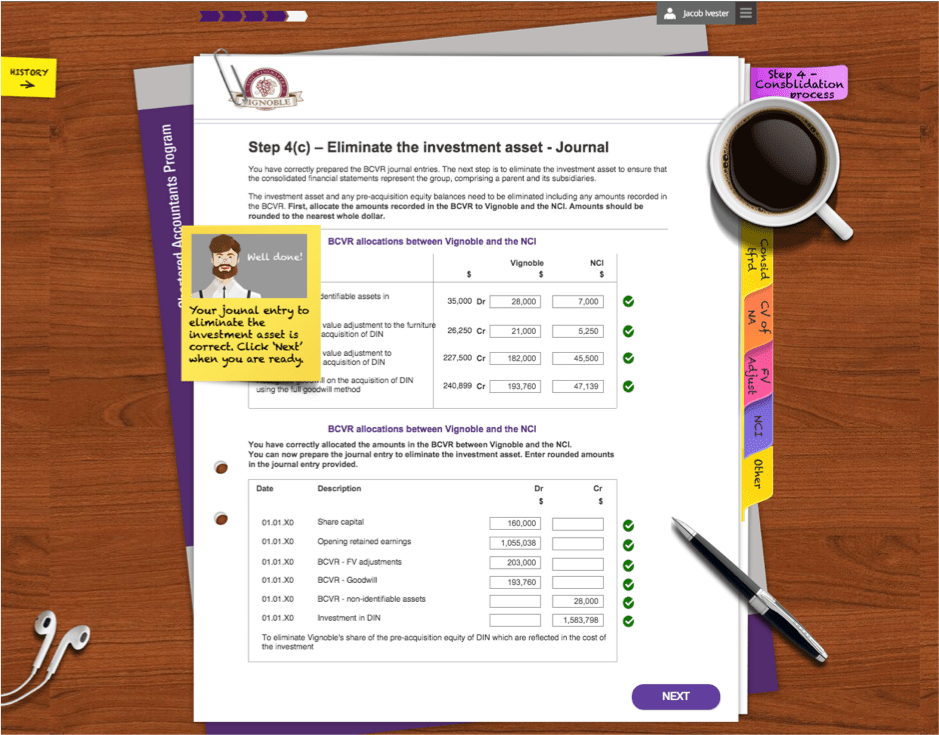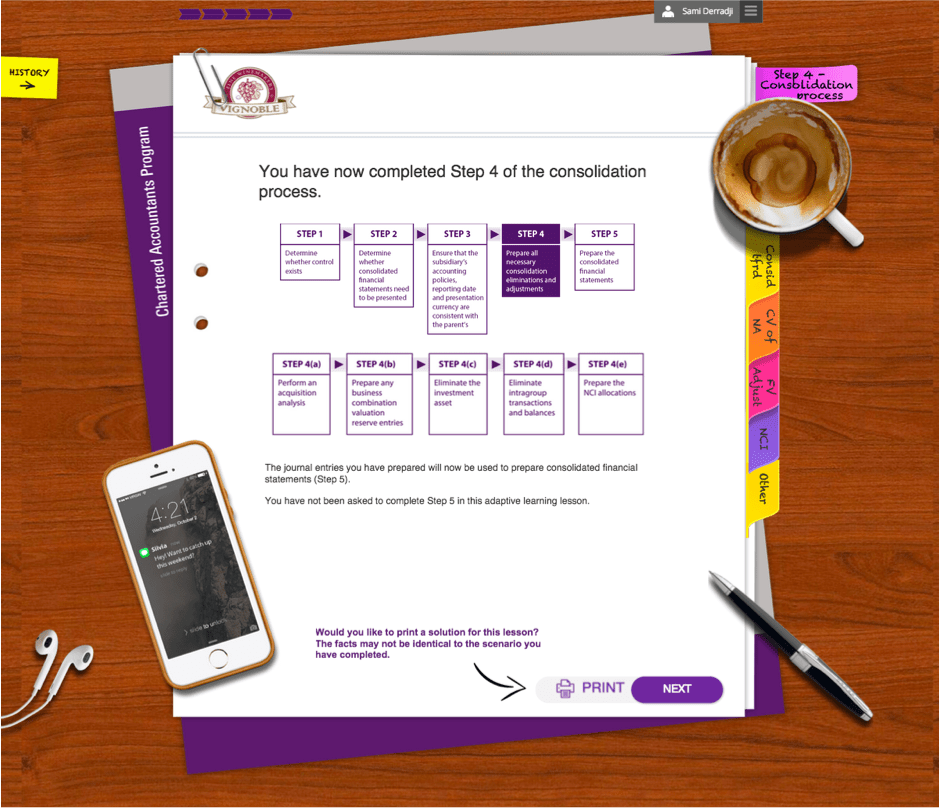Each year thousands of candidates enroll in The Institute of Chartered Accountants Australia and New Zealand (“CA ANZ”) courses all around the world. Candidates are geographically dispersed and operating in different time zones and places, which means traditional learning experiences differ across the groups. Within this context mix modes of instruction are utilised by CA ANZ to provide a more consistent quality of the overall student experience, mainly face-to-face and distance learning. In 2014 CA ANZ partnered with Smart Sparrow to develop two Adaptive Lessons that became the technology mediated component of the different modes of instruction adopted by the organisation.
CA ANZ’s vision was to create a rich, interactive and adaptive learning experience that would teach students enrolled in the postgraduate ‘Financial accounting and reporting’ unit a common and rather complicated accounting process, the consolidation process, which students usually struggle to grasp via conventional learning methods.
The FIN Adaptive Lesson was created by CA ANZ in collaboration with Smart Sparrow’s using the Adaptive eLearning Platform (“AeLP”). From start to finish the graphic design for the FIN adaptive lesson simulates the aesthetic of an office environment to enhance the students’ feelings of familiarity and allow for a cognitive connection between knowledge and the practical application of their skills.

I found this was a really good way to test my understanding of units 15 and 16. I completed the lesson more than once to test if I understood different aspects when the question changed. Student.
Don’t learn to do. Learn by doing.
Understanding and creating proforma for a consolidation process is a skill that can only be acquired through experience and repetition. Utilising the adaptivity feature of the AeLP the team designed a lesson that allowed students to learn at their own pace and that gave the instructors the ability to tailor the content to each student’s’ individual level of knowledge, learning styles and needs.
Every activity was also designed with dynamic facts, meaning the content is randomly generated leading to thousands of different combinations and answers, allowing students to validate and test their learning by redoing the tutorial indefinitely. High-achieving students are fast-tracked to more complex problems, while struggling students are guided towards the correct answers with specific, personalised feedback – rather than using a blanket response such as “You have gotten one or more questions incorrect” – and able to to continue practicing until they get the correct answer and master the concept.
The 3,704 candidates that completed the learning activity showed substantial and improved performance in a summative assessment undertaken in a final, invigilated assessment. The chart below illustrates the improvement of student’s answers between their first and last lesson attempt.

With high levels of student engagement and tangible improvement in performance noted between iterations, when done in a sustained, intense and self-reflective manner, experiential learning opens perspectives that one can rarely find by opening a book. The outcome of an exceptional collaboration between subject matter experts, instructional designers and developers was an award-winning learning experience.


